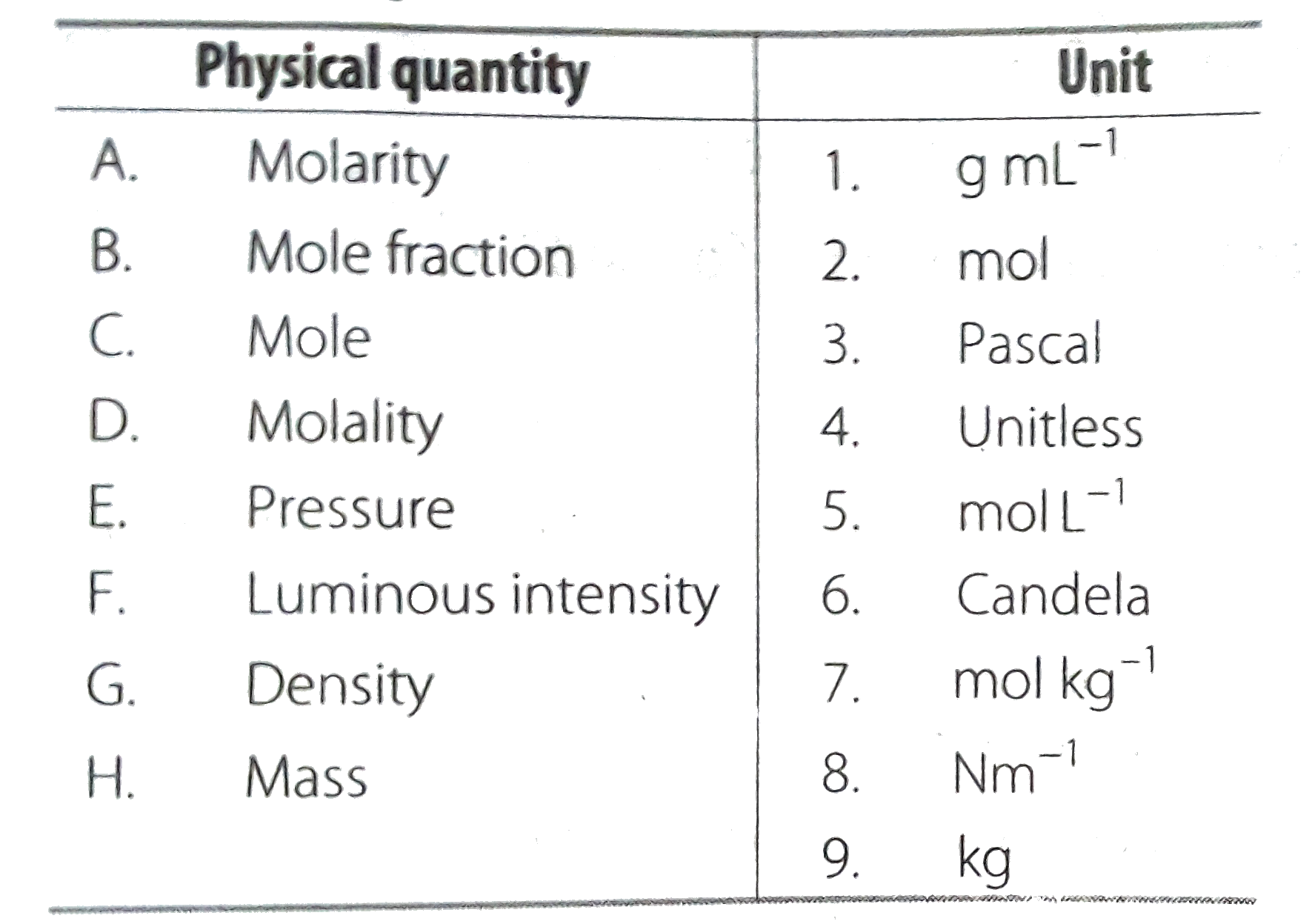Out of the following set of physical quantities , the vector quantities are
area and area vector
impulse and area vector
gravitational potential and force
kinetic energy and velocity
To determine which of the given sets of physical quantities contains only vector quantities, we will analyze each option step by step.
1. Understanding Vector and Scalar Quantities:
- Vector quantities have both magnitude and direction.
- Scalar quantities have only magnitude.
2. Analyzing Option A: Area and Area Vector:
- Area: This is a scalar quantity. It only has magnitude (e.g., measured in square meters).
- Area Vector: This is a vector quantity. It has both magnitude and direction (the direction is perpendicular to the surface).
- Conclusion: This option contains one scalar (Area) and one vector (Area Vector). Not both are vectors.
3. Analyzing Option B: Impulse and Area Vector:
- Impulse: This is defined as the change in momentum, which is a vector quantity (Impulse = Force × Time; Force is a vector).
- Area Vector: As established, this is also a vector quantity.
- Conclusion: Both quantities in this option are vectors. This option is correct.
4. Analyzing Option C: Gravitational Potential and Force:
- Gravitational Potential: This is a scalar quantity. It has only magnitude (energy per unit mass).
- Force: This is a vector quantity (it has both magnitude and direction).
- Conclusion: This option contains one scalar (Gravitational Potential) and one vector (Force). Not both are vectors.
5. Analyzing Option D: Kinetic Energy and Velocity:
- Kinetic Energy: This is a scalar quantity. It has only magnitude (1/2 mv²).
- Velocity: This is a vector quantity (it has both magnitude and direction).
- Conclusion: This option contains one scalar (Kinetic Energy) and one vector (Velocity). Not both are vectors.
Final Conclusion:
The only option where both quantities are vectors is Option B: Impulse and Area Vector.
- Vector quantities have both magnitude and direction.
- Scalar quantities have only magnitude.
- Area: This is a scalar quantity. It only has magnitude (e.g., measured in square meters).
- Area Vector: This is a vector quantity. It has both magnitude and direction (the direction is perpendicular to the surface).
- Conclusion: This option contains one scalar (Area) and one vector (Area Vector). Not both are vectors.
- Impulse: This is defined as the change in momentum, which is a vector quantity (Impulse = Force × Time; Force is a vector).
- Area Vector: As established, this is also a vector quantity.
- Conclusion: Both quantities in this option are vectors. This option is correct.
- Gravitational Potential: This is a scalar quantity. It has only magnitude (energy per unit mass).
- Force: This is a vector quantity (it has both magnitude and direction).
- Conclusion: This option contains one scalar (Gravitational Potential) and one vector (Force). Not both are vectors.
- Kinetic Energy: This is a scalar quantity. It has only magnitude (1/2 mv²).
- Velocity: This is a vector quantity (it has both magnitude and direction).
- Conclusion: This option contains one scalar (Kinetic Energy) and one vector (Velocity). Not both are vectors.
The only option where both quantities are vectors is Option B: Impulse and Area Vector.
Topper's Solved these Questions
- MOTION IN A PLANE BOOK - MODERN PUBLICATIONCHAPTER - MOTION IN A PLANE EXERCISE - Revision Exercises (Fill in the Blanks)
9 Videos
- MOTION IN A PLANE BOOK - MODERN PUBLICATIONCHAPTER - MOTION IN A PLANE EXERCISE - Revision Exercises (Short Answer Question)
31 Videos
- MOTION IN A PLANE BOOK - MODERN PUBLICATIONCHAPTER - MOTION IN A PLANE EXERCISE - Revision Exercises (very Short Answer Questions)
46 Videos
- MECHANICAL PROPERTIES OF FLUIDSBOOK - MODERN PUBLICATIONCHAPTER - MECHANICAL PROPERTIES OF FLUIDSEXERCISE - Chapter Practise Test
16 Videos
- MOTION IN A STRAIGHT LINE BOOK - MODERN PUBLICATIONCHAPTER - MOTION IN A STRAIGHT LINE EXERCISE - CHAPTER PRACTICE TEST
16 Videos
Similar Questions
Knowledge Check
Which of the following sets of physical quantities can be used as fundamental quantities in a system of units?
Alength, velocity and accelerationBlength, mass and accelerationClength, mass and timeDmass, time and acclerationWhich of the following physical quantities has no unit?
ARelative densityBDensityCPressureDThrustOut of the following physical quantities which is NOT a scalar?
AAngular velocityBAngular frequencyCNumber of molesDTotal path length
Match the following physical quantities with units.

View SolutionWhich of the following physical quantities is not conserved?
View SolutionWhich of the following lists of physical quantities consists only of Vector?
View SolutionWhich of the following physical quantities have the same demensions :
View SolutionWhich of the these physical quantities is a vector quantity ?
View Solution
